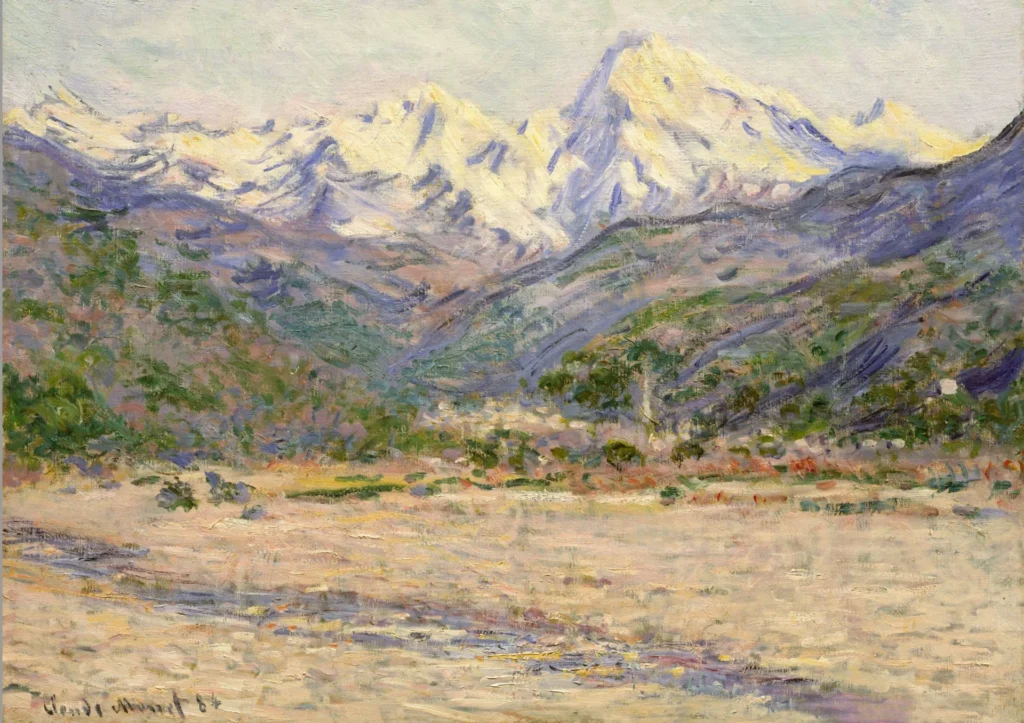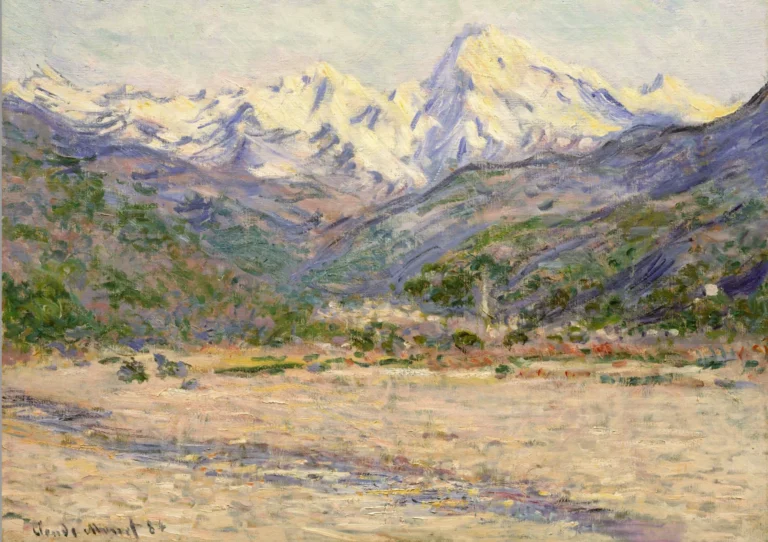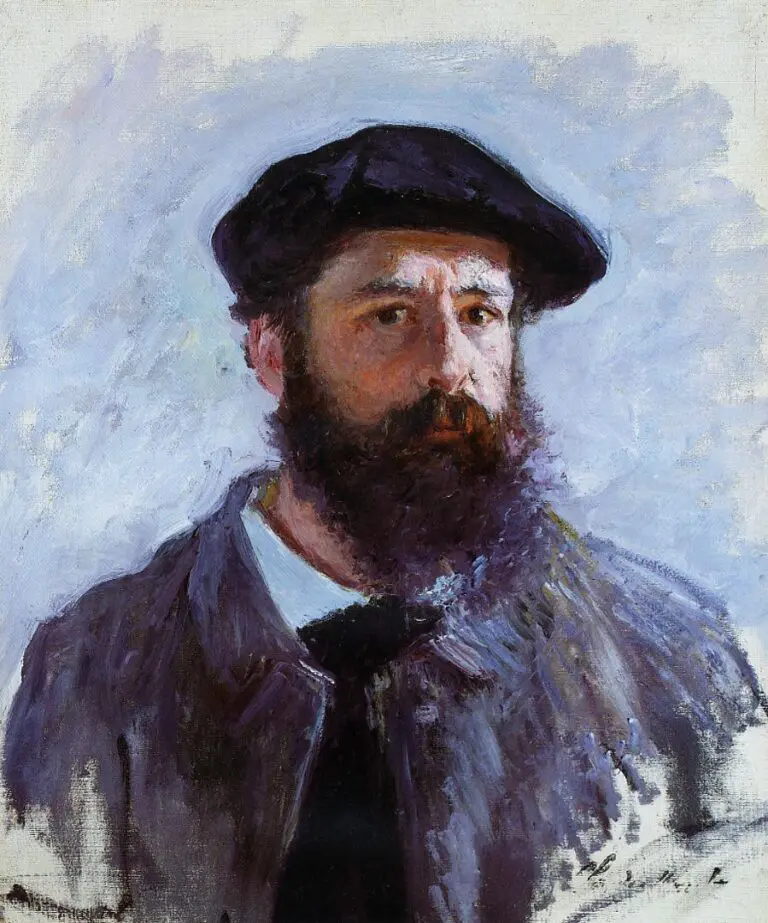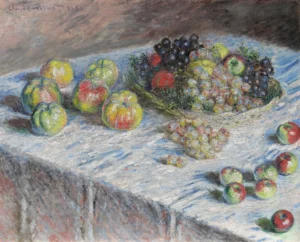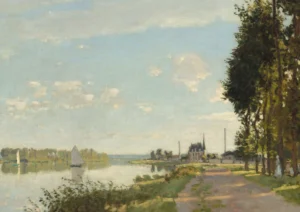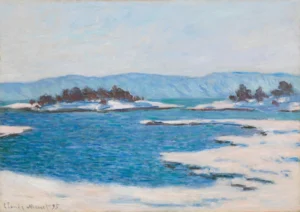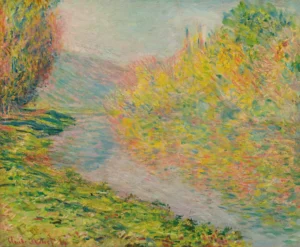The Valley of the Nervia (1884)
Created in 1884 during a ten-week trip to the Italian Riviera, Claude Monet's The Valley of the Nervia exemplifies his mastery of the Impressionist style. This breathtaking painting captures the serene valley where the River Nervia flows, using vivid colors and light to reflect the enchanting beauty of the Liguria region. Monet's distinctive brush techniques create a dynamic interplay of shadow and illumination, bringing the landscape to life. Today, it resides in the prestigious Metropolitan Museum of Art.
1884
About the Artwork
Monet painted The Valley of the Nervia during a productive journey that was crucial to his artistic evolution. His trip to the Italian Riviera exposed him to breathtaking landscapes and vibrant colors that further inspired his impressionistic techniques. This particular view of the valley, with the River Nervia winding gracefully through it, became a canvas for Monet's exploration of light's effects on nature. His passion for capturing transient moments in time is evident in this artwork, as it encapsulates the essence of a fleeting scene, making it timeless.
Did You Know
Monet’s Impressionist technique involved using short, thick strokes of paint to capture the effects of light and movement, making The Valley of the Nervia a prime example of this innovative approach.
Monet was significantly influenced by the landscapes of Italy during his travels, as seen in this painting, which captures the unique light and colors of the Italian Riviera.
This painting is not just a remarkable work of art, but also part of the legacy that established Monet as a leading figure in the Impressionist movement, influencing countless artists who followed.




